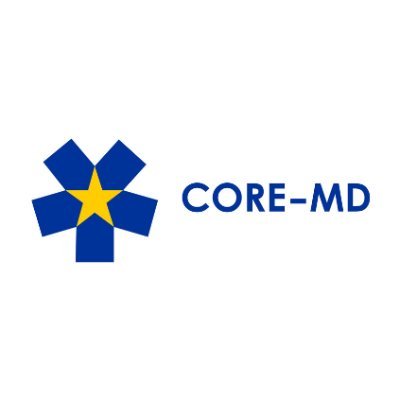HISTORY OF EAP
How it started
CESP 1961-2001 Since the first meeting in Siena (Italy) in 1961, a great number of paediatricians have devoted themselves to the evolution of the quality of care given to European children.
It is impossible to list here all the activities of the national delegates who have succeeded one another for 40 years.
These delegates are listed in an annex with their function. A summary of the annual assemblies’ venues and a list of participants are available too. Unfortunately, the records of the meetings and work performed during 1961-1971 have been lost. I understand that in the first years, national delegates focused above all on the various paediatric practises in the 6 countries of the European Economic Community. They then established an inventory of this information and noticed considerable variations from country to country.
From 1972, we have documents showing the national delegates’ concern to improve the quality of care given to European children and therefore to furnish paediatricians with a better training.

Among the subjects tackled, we have:
- The paediatrician’s training
- Continuing Medical Education
- Relations between paediatricians-general practitioners
- Relations between paediatricians-other medical specialists
- Preventive paediatrics
- School medicine
- Children in hospital
- Perinatal care
- Handicapped child: detection and treatment
The Studying of Subjects
More Info
The study of these subjects often ended with the drawing-up of a “motion”, which after having been voted upon, was sent to the UEMS for adoption. Unfortunately, the paediatricians’ proposals were never followed up and the children’s situation was slow to improve in the various European countries.
In the 80s, the working methods of CESP evolved towards more efficiency. Working groups were created, their mission being to publish surveys on certain paediatric topics.
The first stage consisted in agreeing on the definition of a scope of activities and competencies specific to paediatricians in Europe. In 1986, during the Athens meeting, Paediatrics was defined as “Child and Adolescent Medicine”. The specification of a medical specialty linked to the growth and development of the human being was recognized by the UEMS despite objections from other monospecialist sections. From that moment on, Paediatrics came of age and could develop itself like Adult Internal Medicine, with the possibility of recognizing subspecialties, which were also progressively structuring themselves. The creation of the European Board of Paediatrics in 1993 encouraged European paediatric scientific societies to join CESP and favoured the recognition of organ specialties in Paediatrics by the UEMS, but also at the level of the European Union.
Such an evolution of European Paediatrics could not have been possible without the devotion, competence and dynamism of many paediatricians.
It is important to acknowledge the vision of the future of two paediatricians, the French ROHMER and the German FRICK who, following the example of DE GAULLE and ADENAUER, created in 1959 a “European Liaison Committee of Paediatricians”. Representatives from the 6 countries of the European Economic Community quickly joined these pioneers.
W. VAN ZEBEN (NL), founding member, devoted 26 years of his life to the development of this European medical organization which he presided over from 1977 to 1980. In 1979 he decided to bring the number of member countries up to 12, anticipating the EEC’s political enlargement, which became effective only in 1986. For 10 years, he analysed different paediatric practises in Europe and published in 1979 the first “Report on Paediatrics in the EEC”. A member of the Advisory Committee on Medical Training (ACMT), he strove towards the recognition of paediatrics as a specialty in its own right.
J. VAN ESPEN (B) joined the team in 1962 and his dynamism and long European experience brought him to the Presidency from 1964 to 1971. He changed the name to CESP (European Confederation of national syndicates and professional associations of paediatricians), basing himself on the UEMS, founded in 1958 and grouping the EEC’s syndicates of medical specialists. The mission of this group of European paediatricians was to set up the structures allowing a realistic harmonization of the practice of paediatrics in order to facilitate the free movement of paediatricians, allowed for all doctors as from 1977.
He was also Treasurer of the UEMS from 1968 to 1973 and in this capacity, integrated CESP as a UEMS monospecialist Section of Paediatrics.
He also asked other European countries not yet members of the EEC to take part in the work of CESP as “observers”.
This evolution and progress could not have been possible without the continuous work of Belgian collaborators who were successively secretary-general and treasurer. First Dr Chevalier, from 1961, who in 1968 gave up his post to R. PETIT, followed 10 years later by E. DUYCK who died from sheer hard work in 1984.

Historic Figures
G. VAN DEN BERGHE
G. VAN DEN BERGHE (B) joined CESP in 1979 and was president from 1987 to 1988. To him we owe the new name of CESP (Confederation of European Specialists in Paediatrics). It had indeed become absolutely necessary to extend the purely trade-union function of this association and to be able to propose a European model of training for paediatricians. In order to achieve this, it was essential to integrate representatives from national paediatric societies. This is how after several years of work, he drew up the remarkable document “Paediatric Training in the EC”, published in 1990. Besides it is this survey which served as the basis for the setting-up of the “European Board of Paediatrics” under the presidency of L. HARVEY (UK) and for the adoption of the latter’s statutes in Saint Vincent in 1993 under the presidency of M. DE LOURDES LEVY (P).
H. HELWIG
We owe to H. HELWIG (D) the revision of the former statutes of 1972 and for having the new CESP statutes adopted in 1995 in Interlaken. He also contributed to the evolution of the harmonization of children’s vaccinations, a programme launched in 1984 under the presidency of J.-C. SCHAACK (L).
After the publication of a first brochure in 1987 and an updated version in 1992, J.-C. SCHAACK (L) coordinated the working group, which drew up in 1997 the third version of “Harmonization of children’s and adolescents’ vaccinations in the European Union”. He also encouraged the creation of a CME working group in charge of continuing education in paediatrics.
During these years, with the enlargement of the European Union to 15 countries, with the participation of Austria and Switzerland as member countries, and with the progressive increase in the number of observer countries, the structure of CESP had to be adapted.
It was in 1985, following the sudden death of E. DUYCK (B), that J.-C. SCHAACK (L) became secretary-general. In order to improve the transparency of functions, he asked for the creation of a post of treasurer. From 1984 to 1993, this post was entrusted to G. DE BETHUNE (B), followed by L. DEFLANDRE (B) from 1994 to 1998.
For 15 years, he put all his energy into having CESP recognized as the spokesman of European paediatricians. During these years, he developed contacts with other European paediatric organizations, (UNEPSA, APEE, ESPR, ESSOP, CLUB INT. PED. SOCIALE, SERPA), but mostly with European scientific societies of new paediatric specialties. He encouraged exchanges with European paediatric surgeons and child psychiatrists by inviting them to annual meetings. He took part in numerous national paediatric congresses in order to promote the knowledge of CESP, explain the advantages of the European Board of Paediatrics and improve the vaccinations of European children by harmonizing programmes. He also created the working group on the prevention of accidents with children and in 1996, he coordinated the EURECAAPP survey, conducted by CESP with the help of international experts and financed by the Commission.
R. KURZ
R. KURZ (A) joined CESP in 1989. In 1997-1998 he set up, as president, a working group on ethics in paediatrics. He coordinated the work leading to the publication of several articles in the Eur. J. Pediatr., which were quite remarkable.
As from 1993, J. RAMET (B) took an active part in the work of CESP. Thanks to his competence and dynamism, he became in that same year the president of the European Board of Paediatrics and progressively integrated the various groups of paediatricians responsible for primary, secondary and tertiary care. Thanks to his organization skills and his ability to bring together the various groups, he successfully integrated child organ disciplines into the structure of CESP and had paediatric specialties recognized by the UEMS by creating subsections within CESP.
In 1999, he gave up his post to become secretary-general. He contributed to the further development of relations with the American Academy of Pediatrics and was in charge of promoting the AAP Prep Programme in Europe.
In 40 years, CESP has become a big European medical organization but has still much progress to make in order to be able to function like the American Academy of Paediatrics, i.e. in order to become the spokesman and advocate of children in the European Union.
In order to bring itself up to this level and be able to bear one day the name of “European Academy of Paediatrics”, it needs to have the financial means adapted to its main missions, which are the training of paediatricians, the excellence of care and the improvement of the quality of life of children and adolescents in Europe.
